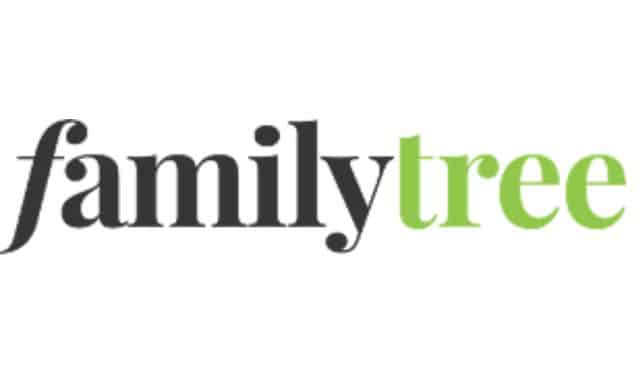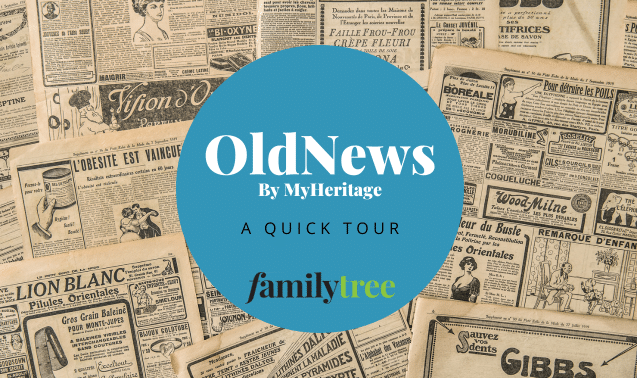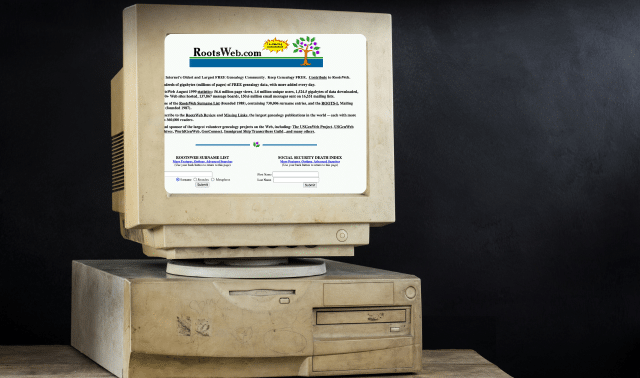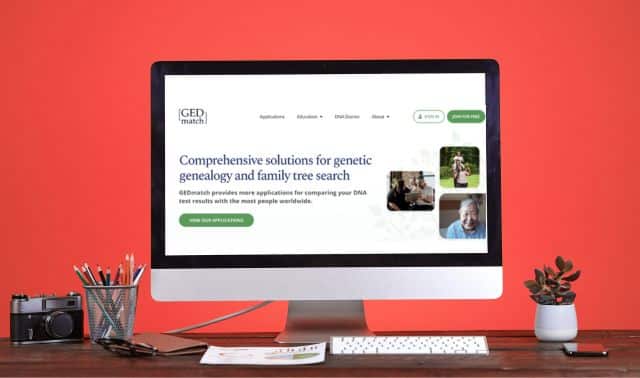internet genealogy is like the Milky Way — always expanding. But it wasn’t always this way. A decade ago, online genealogy pickings were slim, and the resources that were out in cyberspace could be tricky to track down. Today, though, you can type genealogy into any search engine and find millions of Web sites. And it’s not just the numbers that boggle the mind: Who would’ve thought you could find transcriptions from an Alabama cemetery and research queries for Zimbabwe ancestors in a matter of seconds?
The vast Internet universe holds all that — and much more — for family historians. For instance, you might have heard about (or even tried searching) free databases such as those at the FamilySearch <www.familysearch.org> and Ellis Island <www.ellisisland.org> Web sites, where you can comb millions of names instantly. You’ll also find plenty of subscription sites offering up real records at the click of a mouse. So where should you start? If you’re a genealogy Net novice, your best bet is to search those astronomical databases later — after you’ve done a little homework. In other words: Don’t launch your cyber spaceship without reading the manual first. Along with those mammoth ancestor-search databases, the Web has zillions of sites crammed with valuable genealogy information for beginners, including how-to hints, forums for questions and details on specific research topics. Begin your foray into online family history with the best of those beginner-friendly destinations: We’ve picked 12 great free sites with the tools and information to get your ancestor search off to a galactically speedy start.
1. Cyndi’s List
Cyndi’s List is the Yahoo! of online genealogy: The popular portal (a doorway to other sites) contains almost 190,000 categorized links that point visitors to sites covering every imaginable research realm.
This is a terrific place to begin whenever you’re starring a new avenue of research. For example, say you just discovered you have Quaker ancestors. You can go to Cyndi’s Quaker category and browse roughly 200 links on Quaker history, research how-tos and general resources. If the thought of poring over wills and probate files gives you the willies, click the Death Records category to learn how to use them in your research. Brand-new to genealogy? Head over to the Beginner’s section for lessons, guides, tips and expert advice.
Cyndi’s List has a category for Surnames and Personal Sites, but you also should look up your surname using the search engine at the top of the home page. Cyndi categorizes sites alphabetically by the title on a Web page; that means if your Morris relatives are sitting on a page titled Walker and Associated Families, you’ll never find that Morris listing by looking under M.
2. FamilySearch
Talk about popular — this site (maintained by the Church of Jesus Christ of Latter-day Saints) averages 14 million hits a day. Of course, with nearly a billion names in its databases, you’d expect a lot of traffic. What may surprise you, though, are all the site’s free tools and guides, Our favorites are Research Guidance and Research Helps (both accessible from the Search tab at the top of the home page).
Research Guidance features a virtual research assistant to help you figure out where to start your search. For example, if your ancestors came from Germany, click the G link at the top of the page, then Germany, then the town of birth, and finally, the type of record you’re seeking. A final link will lead to a page containing historical background, tips for beginners and a printable Search Strategy — a step-by-step how-to guide.
Click over to the Research Help tab to locate place and topic-specific outlines, free forms, historical background reports and maps. You’ll even find letter-writing guides to help you compose genealogy queries in German, Finnish, French, Italian, Portuguese, Slovak and Spanish.
3. The Genealogy Home Page
If you’re the type who craves info on the latest and greatest genealogy Web sites, you’d better make The Genealogy Home Page your home page. Here, you’ll find both new sites and “really new sites,” in addition to those already included in the main Genealogy Home Page directory.
The real goodies are links to hundreds of sites, arranged in categories of particular interest to beginners. Typical topics include research guides, maps, religious helps, photography, events and societies. For example, click on the map section for pointers to the Internet’s best historical map collections, such as the Perry Castaneda Collection at the University of Texas at Austin <www.lib.utexas.edu/maps>.
Beginners hoping to find other people researching their kin can look through the site’s list of Family/Personal Web pages. The chronological listing (based on when The Genealogy Home Page added the sites) isn’t conducive to finding relevant links quickly, though, so take the Webmasters’ advice and try the search at GenealogyPortal.com <www.genealogyportal.com>.
4. Genealogy Resources on the Internet
<www-personal.umich.edu/cgaunt/gen_int1.html>
Webmasters Chris Gaunt and John Fuller have assembled this dandy portal, which will point you to popular Web sites, mailing lists and e-mail addresses. Beginners will appreciate the e-mail list: It includes subscription information for several family association newsletters. These newsletters provide an easy way to network with other genealogists as well as access to their completed research. You’ll also find e-mail addresses for several genealogical and historical societies — definitely handy for those cases when you need to locate a place-specific resource.
When you click on the link to Web sites, it may look as if there’s only a single page of links. Don’t be fooled — dig deeper. If you dick on any subject on the page, you’ll hop to another page that contains actual talks. For example, the Connecticut links lead to a page with county and statewide resources, mailing lists, libraries and historical societies.
Among the links at the top of the site are references to Telnet, Gopher and FTP sites. These terms refer to ways of accessing material other than clicking to a Web sire. Most of these resources existed before browsers made Web surfing easy; in fact, many are either default or have been converted to Web pages.
5. Genealogy Today
When you have several hours to surf the Net, head over to Genealogy Today and get blissfully lost. Among the site’s enticements arc articles for beginners, links to vital records and cemetery searches, and a directory of StateGenSites, which index handpicked genealogy links for each US state. Those links point you to searchable obituaries, newspaper archives, free census transcriptions and historical societies’ Web sites.
Genealogy Today also contains several unique features, including the First Name Basis protect and the Genealogy Knowledgebase. The First Name Basis database helps you locate ancestors through only their first names. Knowledgebase is a clever compilation of searchable genealogy terms, including old illnesses, old occupations, common abbreviations and government acronyms. If you or someone you know was adopted, don’t miss Genealogy Today’s articles on the topic.
6. Genealogy.com Learning Center
<www.genealogy.com/genehelp.html>
Don’t know much about genealogy? Genealogy.com’s Learning Center will help you become a family history whiz. Here, you’ll find answers to tough research questions, dozens of free articles and lessons geared toward first-time family tree climbers. Learn how to interview elderly relatives, where to book a genealogy vacation, how to decipher old handwriting and even when to holler “Uncle!” and turn to a professional genealogist.
The Learning Center has six main entry portals, all containing more than first meets the eye. Want to learn about different record types? Visit the Reference area. If you don’t know a pedigree chart from pineapple sage, click over to the free classes in the How-To section. Or, if you’re stumped, you can submit your peskiest research question to a professional genealogist. It’s all here, so jump in and keep clicking.
7. Library of Congress (LOC)
You can’t be a genealogist without becoming a historian — and where better to learn about history than America’s Library? The LOC’s American Memory project <memory.loc.gov> is an online compilation of 7 million digitized items from more than 100 LOC collections — and you can search them all for free.
You’ll find an eclectic mix of artifacts here, including Oregon Trail photos, first-person narratives of pioneer life, 19th-century sheet music and Thomas Jefferson’s personal papers. You can search for items across all collections, or pick any combination of collections.
Beginners won’t find a better historical starting point than Map Collections, 1500-2003. The collection includes old city maps, railroad lines, villages, military campaigns and surveys. If you’re lucky, you’ll discover a map of an ancestor’s hometown from the time he lived there. This American Memory database has hundreds of city maps, with formats such as a 1776 Boston street map and an 1868 bird’s-eye view of Fort Wayne, Ind. Each collection has copyright details, in case you want to use an image on a Web site or in a family history.
8. National Archives and Records Administration (NARA)
If the Library of Congress is America’s Library, then NARA is our record keeper. Charged with overseeing the management of federal records, NARA houses the Declaration of Independence, the US Constitution and records pertaining to your ancestors.
You can’t access records such as Civil War pension files directly on NARA’s Web site, but you can access background information, finding aids and catalogs. One of those catalogs, the Archival Research Catalog (ARC), describes NARA’s holdings and offers digital copies of some documents (mostly photographs, maps, Native American rolls and a few other record types). Beginners will want to read the helpful hints on finding genealogical data in ARC at <www.archives.gov/research_room/arc/arc_Info/genealogy_ search_hints.html>. You’ll even find a downloadable ARC tips sheet on how to best search the system.
Newbies also will want to explore the research-topics section <www.archives.gov/research_ room/genealogy/research_topics/other_research_topics.html>. NARA created these articles and guides specifically to assist you in using different types of records, such as immigration documents or military files. From the archives’ Web site, you also can request forms to order military, land, census, passenger and Native American records by mail.
9. RootsWeb
This site is the mother of all grassroots genealogy sites, and despite being bought by corporate giant MyFamily.com several years ago, the online network has stayed true to its roots. You’ll find tons of goodies at the “oldest and largest free genealogy site.”
With so many resources to explore, where should a beginner start? Get going with three of our favorite features: mailing lists, the RootsWeb Surname List (RSL) and the Guide to Tracing Family Trees.
Mailing lists are a must for meeting “Internet cousins” — those distant relatives who share an ancestor several generations back. When you sign up for a mailing list, you automatically receive every message e-mailed to the list (unless you choose to receive one “digest” containing several messages). RootsWeb hosts thousands of mailing lists, each devoted to a single surname, locality or topic. Make sure to check out location-specific mailing lists — the members are researchers whose ancestors lived in the same county as yours.
For even more networking opportunities, head over to the RSL, a registry of more than 1 million surnames, with links to people who are researching those surnames. If you find an RSL listing that you believe is part of your family, e-mail the submitter.
Our third pick here is the RootsWeb Guide to Tracing Family Trees — 30 lessons on topics such as foreign research, heraldry, land records and immigration. Follow links within the lessons to other online resources.
10. The USGenWeb Project
Beginner, be prepared — you’re about to hit the jackpot for US genealogy. This ambitious network hosts family history pages for every state and county. Volunteers administer all the sites, so the amount and type of information posted depends on the volunteer’s time and energy. But in general, each page serves as a meeting — and starting — point for roots research in that locale. You’ll find at least a query page and a place to post the surnames you’re searching.
Beyond that, it’s a lot like a grab bag at a carnival — you may uncover treasures or have to settle for a white elephant. For example, at some county pages, you might stumble upon transcriptions of wills and probate files, links to census records, addresses of local cemeteries and family Bible inscriptions. On others, the volunteers might have posted only the address and phone number of the county courthouse or local genealogical society.
USGen Web also sponsors several research-sharing projects, such as online transcriptions of marriage bonds, wills, tombstones, public-domain records and the federal census. For help with the basics, such as preserving photos, learning names of occupations, writing queries and other topics, click over to the Help for Researchers section.
11. Vital Records Information: United States
Simple vital records — those official pieces of paper documenting births, deaths and marriages — are a staple of roots research because of all the juicy genealogical details they provide. A death record, for example, can contain the mother’s maiden name, the deceased’s place of birth, his cause of death, the length of illness and the names of the attending physician and the person who supplied the information.
Unless you’re lucky enough to own the original certificate, you’ll have to send away for an official copy. But the records’ location — the place you need to write — isn’t always easy to predict. It depends on the state and the date the event (birth, marriage or death) took place. In Missouri, for instance, the state has a record of births and deaths since 1910 and of marriages since July 1948. In New Jersey, you can obtain some records back to 1848. Before the states kept records, most events were recorded at the county level.
This Web site provides an easy way to track down the appropriate agency to contact for a vital record, as well as the current fee. Fees change frequently, though, so double-check before sending money with your request. From the home page, click the state name for information on ordering vital records. If your ancestor was born abroad, see <www.vitalrec.com/links2.html> for help getting foreign vital records.
12. The WorldGenWeb Project
Wrap up the philosophy of USGenWeb, toss it over the pond, and you’ve got the seven regions of WorldGenWeb. Organized by continent, this site is attempting to put worldwide genealogical resources within easy reach online. You’ll find sites for most of the world here (although African resources are slim).
Navigate to your ancestor’s country of origin by first clicking on the appropriate continent, and then following the links to your country or territory. Some continents may contain more than one site; for example, Europe has four regional sites: British Isles GenWeb, CenEuro GenWeb, EastEuro GenWeb and Mediterranean GenWeb. Because volunteers administer the sites, each will have its own flavor. Some country pages have only a mailing list and bulletin board; others have transcriptions, Bible records and research guides for beginners.
Now that you’ve surfed these 12 sites, you’ve undoubtedly learned a lot about family history, including a valuable lesson that goes beyond the links, guides and tools: In the world of online genealogy, you really can get something for nothing. So grab your mouse and get clicking — you’re ready to start exploring the rest of the online genealogy universe.
From Family Tree Magazine‘s November 2003 Trace Your Family History.




